Problem with My Zephyr Venezia Hood
Laurie
12 years ago
Featured Answer
Sort by:Oldest
Comments (14)
djg1
12 years agoLaurie
12 years agoRelated Discussions
how high can I install my Zephyr Monsoon in a 25" deep hood?
Comments (10)regbob, thanks for the insights. Well I look at it a little differently. Since I have a special needs child I often put things on the burner farthest back with nothing burning on the front. Secondly, I do not want to be in an uncomfortable position or have to bend awkwardly to 'learn' not to bump my head. That makes no sense to me to purposely put something where my head might bump into it. I cook only a little for fun and mostly out of necessity and I don't need any negative reinforcements to being around the range. My cabinet makers made a nice mockup of my hood with two strong guys holding it at various heights and me practicing lifting something to the back burner, which is the primary time my head may bump. 33" off the stove, or 69" from the floor, seemed like a good clearance. I do not know how much functionality I am losing from the hood being this far away. Maybe some. But coming from a kitchen with none, I think I can live with this....See MoreZephyr or Windster Range Hoods
Comments (9)I have a Windster under-cabinet model with baffles. It's only been installed for about a year, but so far I like it fine. Speed 3 is somewhat noisy, Speed 2 is quite tolerable, and Speed 1 is fine. The baffles are easy to remove and replace for cleaning ( they have handles that are easy to grasp rather than those little button-type knobs) and they capture a LOT of grease. I do have to clean them more often than I'd like because I don't like looking up there and seeing that grease. Their customer service department has been responsive. When I had a problem with the baffles, new ones were hand delivered to me immediately. I like the look of the hood and it seems quite sturdy. The LED lighting is adequate and I specifically wanted a hood that didn't use Halogens. My one complaint is that the instructions did not say that we needed to install a damper (silly me, I just assumed it either came with one or would instruct me to install one) and we didn't discover that until AFTER it was installed, which required doing some things over again. Windster hoods do hail from China, so I'll have to see how it works out for the long term, but so far, so good....See MoreArchitect nixes my pick: Best P195P hood vs Zephyr Monsoon I
Comments (32)cpartist, thanks for the info on the monsoon (and pacemakers). I will stick with the monsoon and gas though even though lots of folks here love induction. Opaone, you must revisit the keys then after this pandemic is over! Although I think you would find it a bit different from before, more people have discovered it. But it is such a relaxed lifestyle. Regarding your above question about heat, we don't have any in this house! Megs, thanks for your input on Best, I feel that the noise level is what pointed me towards Zephyr in my initial research. Fureywoman, thank you for relaying your store's confidence in Zephyr. We emailed architect today and he is fine with our choice--which supports the theory that the cabinetmaker was the source of the recommendation....See More42" Zephyr Titan or Venezia for 36" Induction cooktop
Comments (11)All of you seem to be new to this topic, so please rummage around here reviewing 'hood' and 'MUA' threads. There is also the Hood FAQ with hopefully useful information. https://www.houzz.com/discussions/5161173/hood-faq#n=77 A few key facts: CFM is cubic feet per minute, and measures a volumetric air flow rate. For a given hood, noise will be proportional to some power of the CFM. Induction cooking plumes tend to be lower velocity than gas cooking plumes, so for most conventional cooking the velocity of the air pulled into the hood by the hood system blower can be lower. Without wok cooking or meat searing, this might be as low as 60 ft/min for the fastest rising plumes, whereas for the more vigorous cooking, particularly on powerful gas range tops, 90 ft/min should be aimed for. Hood intake velocity equals the actual blower CFM divided by the hood entry aperture in square feet. Hood entry aperture should overlap rising and expanding plumes. Actual CFM is well less than rated CFM. See all the comments on this in myriad threads. Noise is mainly due to blade tip turbulence and baffle aerodynamic turbulence, with a contribution from duct turbulence. In minimizing this, more distant blowers will be a bit quieter than nearby blowers, distant blowers beyond in-duct silencers will be quieter than without. Oversized (necessarily remote) blowers run at low speed will be much quieter than small blowers operating at top speed for the same CFM. Microwave oven pretend hood functions are generally less than inadequate. Feel free to ask if i missed a topic raised above....See MoreLaurie
12 years agodrwalt
5 years agokaseki
5 years agolast modified: 5 years agokangnyank
4 years agoPhilip Dayal
4 years agoscshyu
4 years agoAndy Garcia
4 years agoRolanda Desrosiers-Lewis
3 years agoksd4423
3 years agoGeoff Ping
3 years agoksd4423
3 years ago
Related Stories
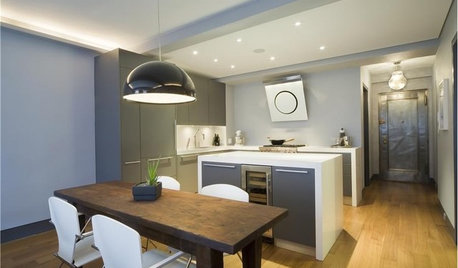
KITCHEN DESIGNHow to Choose the Right Hood Fan for Your Kitchen
Keep your kitchen clean and your home's air fresh by understanding all the options for ventilating via a hood fan
Full Story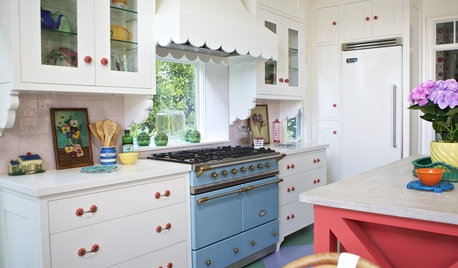
KITCHEN APPLIANCESThe Many Ways to Get Creative With Kitchen Hoods
Distinctive hood designs — in reclaimed barn wood, zinc, copper and more — are transforming the look of kitchens
Full Story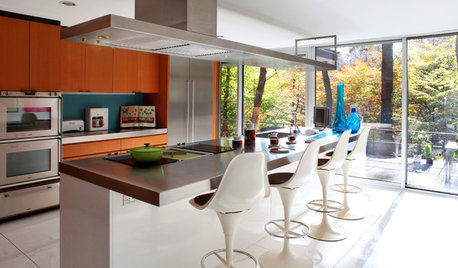
KITCHEN APPLIANCESLove to Cook? You Need a Fan. Find the Right Kind for You
Don't send budget dollars up in smoke when you need new kitchen ventilation. Here are 9 top types to consider
Full Story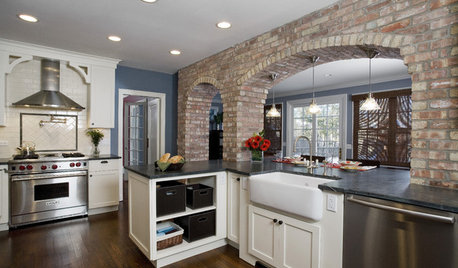
KITCHEN DESIGNKitchen of the Week: Exposed Brick Arches in Illinois
A careful restoration of a surprising discovery lends an unexpected accent to this contemporary kitchen
Full Story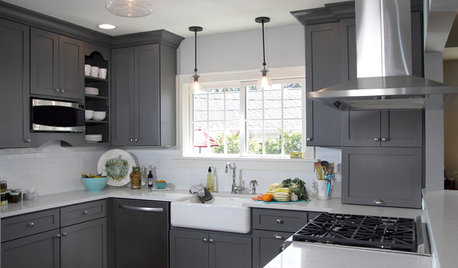
KITCHEN OF THE WEEKKitchen of the Week: New Function, Flow — and Love — in Milwaukee
A traditional kitchen get an improved layout and updated finishes in a remodel that also yields a surprise
Full Story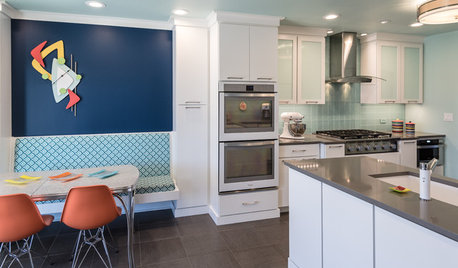
KITCHEN OF THE WEEKKitchen of the Week: Fans of Traditional Style Go For a ‘Mad Men’ Look
The TV show inspires a couple to turn their back on the style they knew and embrace a more fun and funkier vibe in their kitchen
Full Story
HOUZZ TOURSMy Houzz: Bright and Cheerful Updates to an 1890s Colonial Revival
Modern tweaks, including a kitchen overhaul, brighten a family’s home
Full Story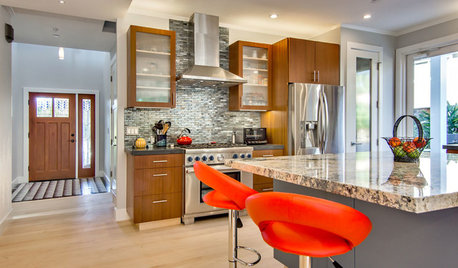
KITCHEN DESIGNKitchen of the Week: Breathing Room for a California Family
Wide-open walkways and generous storage give a couple who love to host all the kitchen space they need
Full Story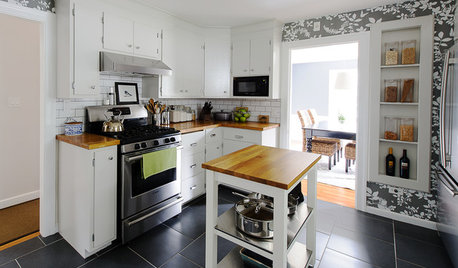
KITCHEN DESIGNKitchen of the Week: A Budget Makeover in Massachusetts
For less than $3,000 (not including appliances), a designing couple gets a new kitchen that honors the past
Full Story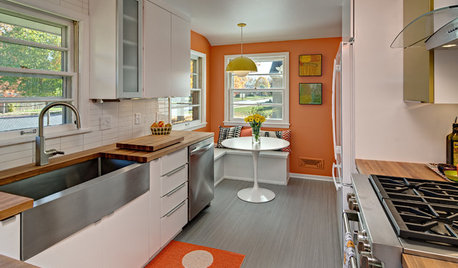
KITCHEN OF THE WEEKKitchen of the Week: Midcentury Meets Sweden in Minneapolis
A fun, retro-style makeover gives an aging galley kitchen a fresh look with a nod to the past
Full Story


kangnyank